.jpg)
Kuhe Ryokan
Other Onsens in Yamagata
Yamagata
Hospitality at Kuhe Ryokan
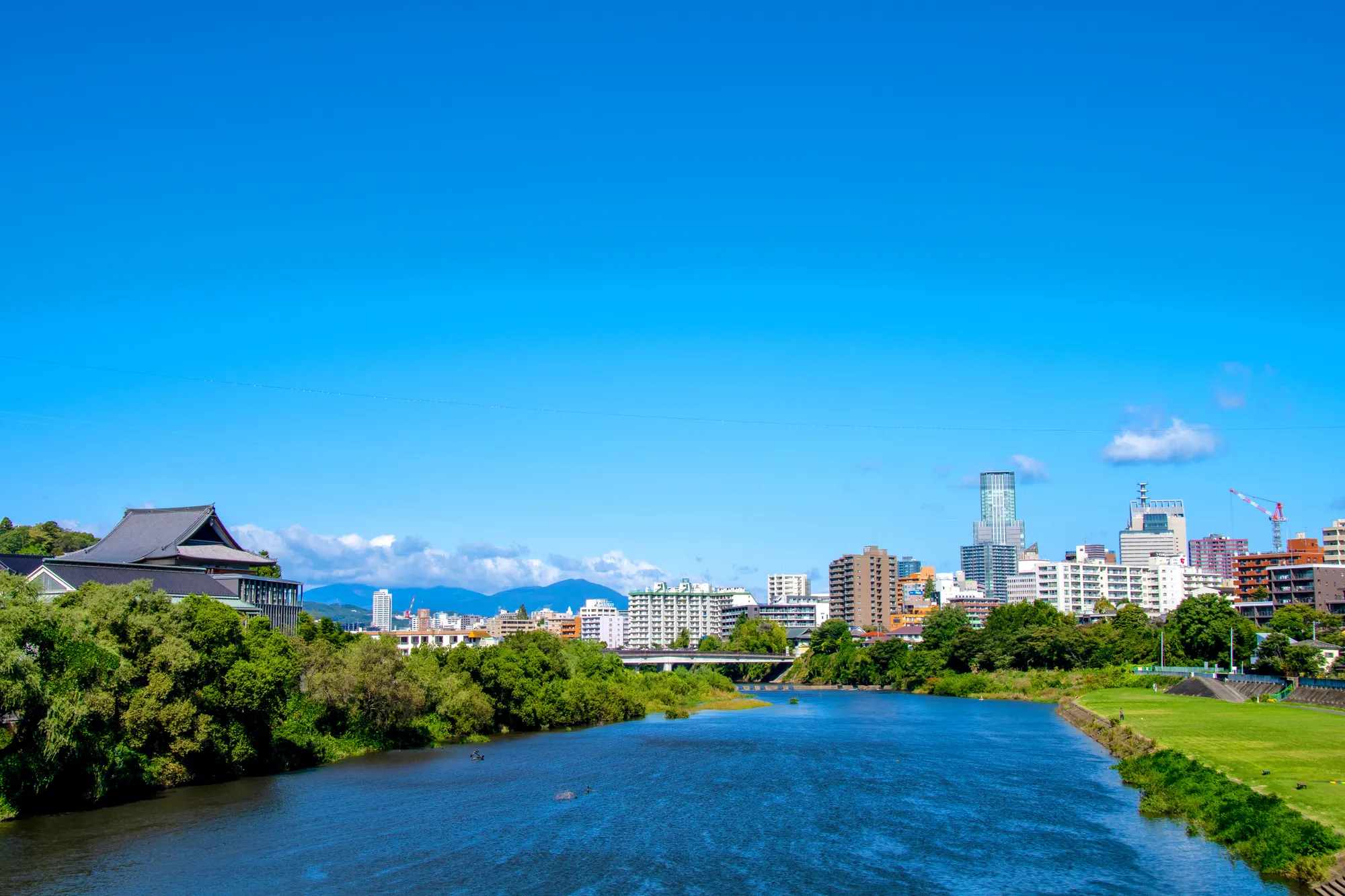
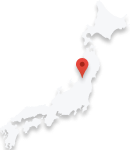
Yamagata Prefecture is located in the northern part of Honshu, in the Tohoku region facing the Sea of Japan.
The prefectural capital is Yamagata City. It takes about 3 hours to get from the capital city of Tokyo to Yamagata Station in the city by bullet train.
Surrounded by splendid mountains that are counted among the 100 famous mountains of Japan, the Yonezawa Basin, Yamagata Basin, and Shin-pressure Basin spread out from the south. Located on the Sea of Japan side, the Shonai Plain is an area rich in nature through which the Mogami River flows. The Yamagata Basin in Yamagata City is famous for producing cherries, which boast the largest production volume in Japan.
Yamagata Prefecture is characterized by the fact that there is no bias towards Onsen areas, and Onsens spring from all municipalities. It is truly a Onsen heaven where you can enjoy Onsens wherever you go. In order to promote the use of Onsens, the number of "National Recreational Onsen Resorts" designated by the Minister of the Environment of Japan is also one of the highest in Japan.
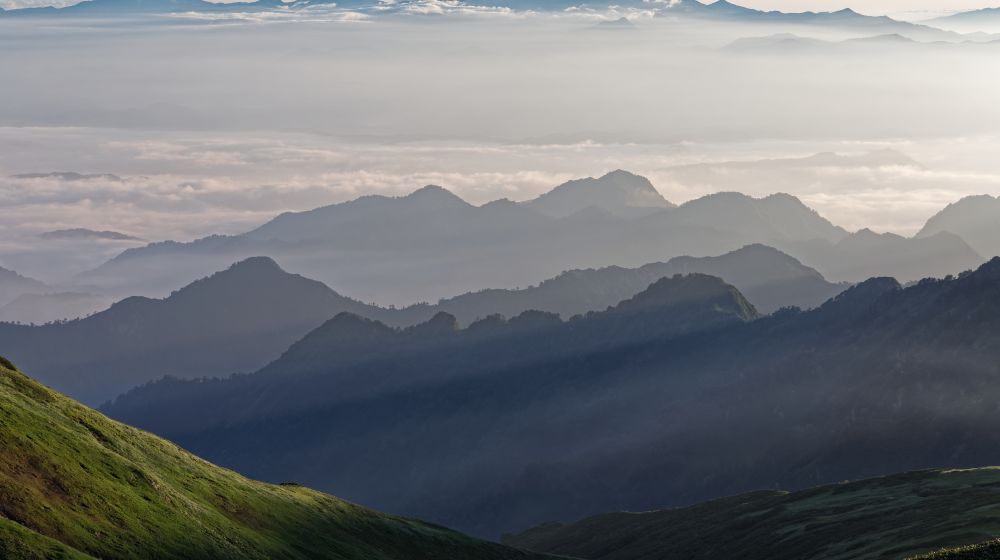
The prefecture is roughly divided into four regions: Murayama, Shonai, Mogami, and Okishi.
The Murakami area, where Yamagata City is located, is home to major Onsen resorts and tourist attractions that represent the prefecture.
Zao Onsen is the oldest Onsen in the prefecture, and Ginzan Onsen is a Onsen resort with a nostalgic Onsen town. At the Zao Onsen Ski Resort near Zao Onsen, you can see rare tree ice while enjoying winter sports in winter.
Yamagata Castle is one of the largest castles in the Tohoku region, selected as one of the 100 best castles in Japan. The ruins of the castle, which was maintained as Kasumijo Park, are famous for cherry blossoms.
At Risshaku-ji Temple, which Matsuo Basho visited on his travels, you can enjoy the beautiful scenery of the mountain temple in all four seasons.
There are two airports in Yamagata Prefecture: Yamagata Airport and Shonai Airport. For domestic flights, Yamagata Airport operates only round-trip flights from Haneda (Tokyo), Osaka, Nagoya, and Sapporo, and Shonai Airport operates only from Haneda Airport in Tokyo.
If Tokyo's Haneda or Narita airports are your first landing point in Japan, traveling from Haneda Airport to Yamagata Airport is the fastest. From Yamagata Airport, it takes about 40 minutes by shuttle bus to Yamagata Station in the city.
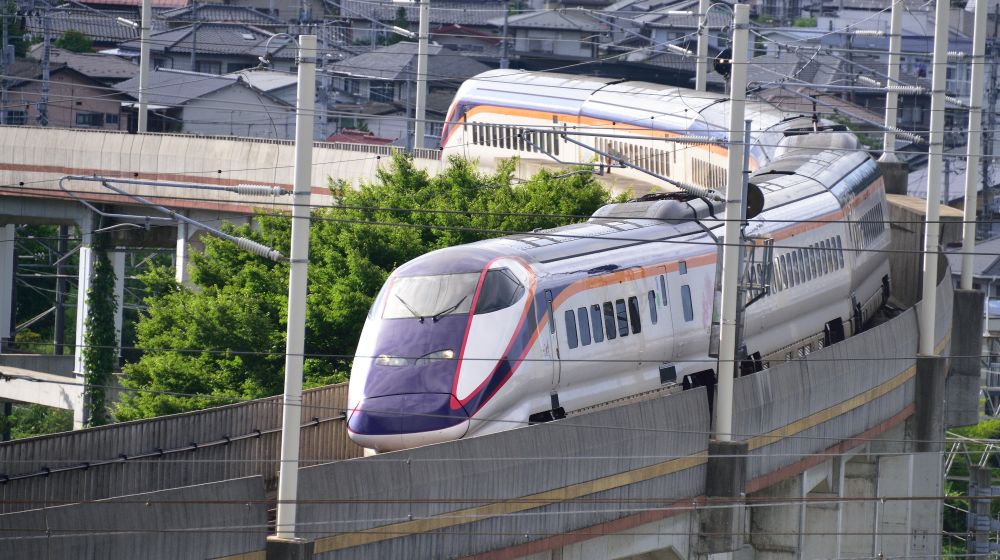
<Airplane and Bus>
Haneda Airport → Yamagata Airport (about 1 hour) → Yamagata Station (about 40 minutes)
Haneda Airport → Shonai Airport (about 1 hour) Shonai Airport → Sakata Station (about 30 minutes)
From major cities in Japan to major cities in the prefecture
<Shinkansen / Train>
Tokyo Station → Yamagata Station (about 3 hours)
<Airplane and Bus>
Osaka International Airport (Itami Airport) → Yamagata Airport (about 1 hour 10 minutes) → Yamagata Station (about 40 minutes)
<Shinkansen / Train>
Shin-Osaka Station→ Tokyo Station→ Yamagata Station (about 5 hours 30 minutes)
It takes about two and a half hours from Shin-Osaka Station to Tokyo Station.
<Airplane and Bus>
Komaki Airport→ Yamagata Airport (about 1 hour 5 minutes) → Yamagata Station (about 40 minutes)
<Shinkansen / Train>
Nagoya Station → Tokyo Station→ Yamagata Station (about 4 hours)
It takes about 1 hour from Nagoya Station to Tokyo Station.
<Airplane and Bus>
New Chitose Airport→ Yamagata Airport (about 1 hour 10 minutes) → Yamagata Station (about 40 minutes)
<Airplanes & Train>
Sendai Airport →<Sendai Airport Railway>→ Sendai Station→ Yamagata Station (about 1 hour 30 minutes)
The Sendai Airport Line, which connects Sendai Airport and Sendai Station, goes directly to the JR Tohoku Main Line. Therefore, there is no need to change trains. It takes about 20 minutes from Sendai Airport to Sendai Station, and about 1 hour and 5 minutes from Sendai Station to Yamagata Station.
<Bus>
Sendai Station→ Yamagata Station (about 1 hour 15 minutes)
The three mountains of Dewa (Mt. Tsuki, Mt. Haguro, and Mt. Yudono) and Mt. Zao have been worshipped by people as gods since ancient times.
In ancient times, Tohoku was far from Nara and Kyoto, where the capitals were located, and was considered to be a place where a different ethnic group called Emishi lived. The Emishi were people who did not submit to the imperial court because their customs and language were different from those of other regions.
In order to pacify the Tohoku region, the Imperial Court sent an expeditionary force, which prayed for the surrender of Ezo to the three mountains of Dewa and Mt. Haguro. Through prayers, the Imperial Court succeeded in bringing Ezo under its control in the early Heian period (794~1185).
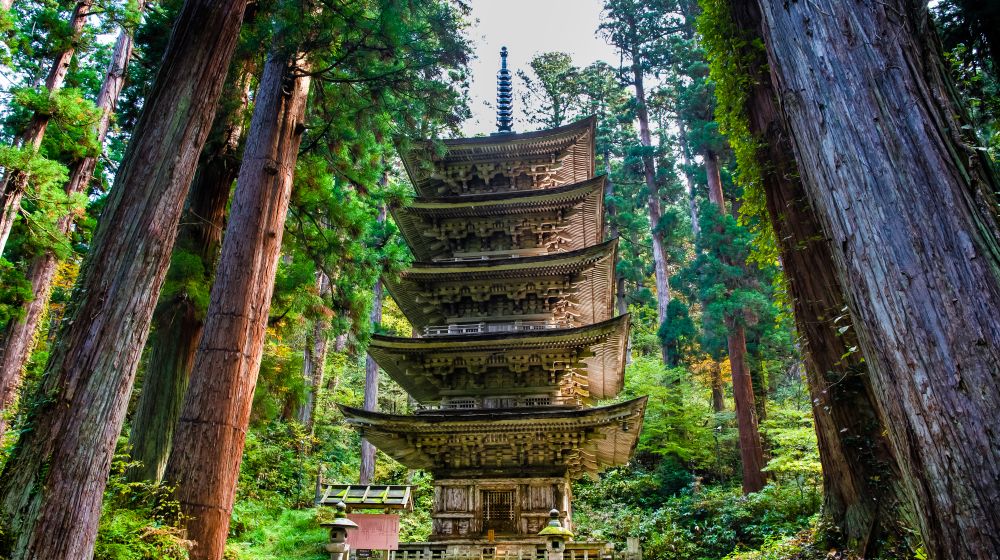
In the Middle Ages and the Warring States Period (1467~1615), the Onsen resort was not only a place for warlords to heal themselves, but also a forge factory for the manufacture of guns.
In 1601, Uesugi Kagekatsu became the first lord, and the Yonezawa domain was placed in what is now Yonezawa City.
In Shirabu Onsen, in 1604, Naoe Kanetsugu, the chief of Uesugi Kagekatsu, manufactured a gun. This gun was used in the Osaka winter campaign in 1614, and the gun corps was very active. The Ōsaka no Jin is a battle that ended the Sengoku period, which lasted about 150 years, and refers to two battles, the Ōsaka Winter Jin in 1614 and the Ōsaka Summer Jin in 1615. In Shirabu Onsen, there is a monument of the gun forging ruins.
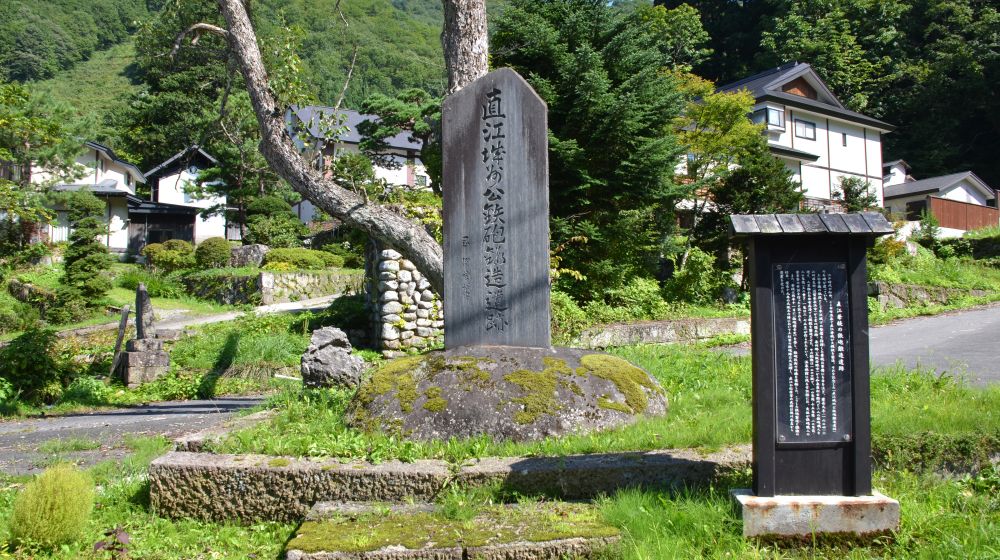
In the early modern and Edo periods (1603~1868), Onsen resorts were bustling and developed due to mountain worship.
In the Edo period (1603~1868), the center of the Dewa Sanzan cult shifted to Mt. Yudono.
The shrine of Yudonosan Shrine on Mt. Yudonosan is the source of a huge rock and the Onsens that gush out of it. Mt. Yudonosan is said to be "do not speak, do not listen," and there is a law that says, "Never say what you see or hear on Mt. Yudono, and you must not ask about it." Matsuo Basho, who visited Mt. Yudono, did not write a haiku about the details, saying, "I wonder if it is a way to get wet in the unspoken bathhouse."
The Dewa Sanzan pilgrimage gradually came to the attention of the common people with its appearance in Matsuo Basho's travelogue "Oku no Hosomichi".
Basho's haiku about Yuzanden aroused great interest among readers, and the Dewa Sanzan poem became popular among the common people. Many people from all over Japan set out for Mt. Yudono, a sacred place where Onsens gush.
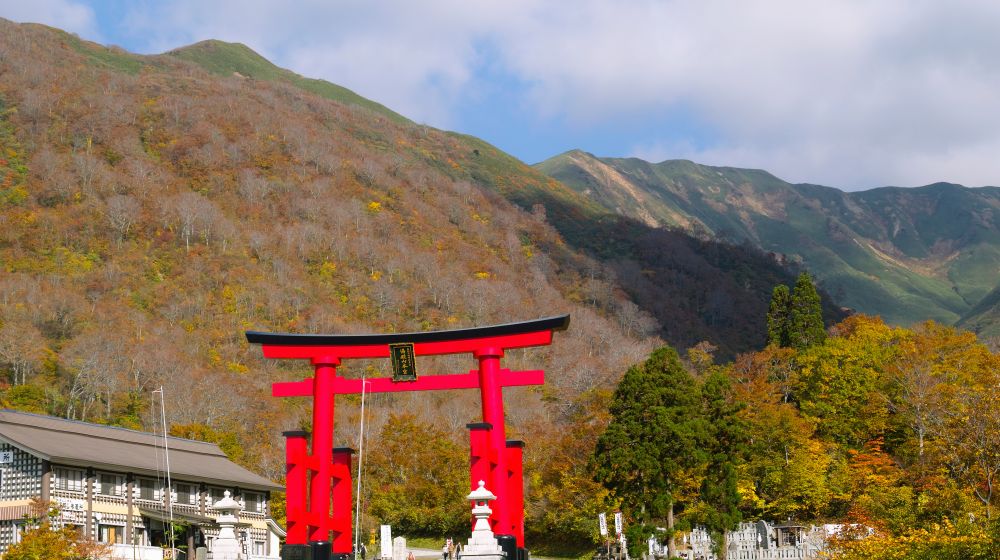
The Onsens in Tsuruoka City were crowded as a place for the "dedication drop" of the Dewa Sanzan pilgrimage.
"Shojin-drop" refers to the resumption of eating meat and drinking alcohol after the completion of events that keep the mind and body clean, such as pilgrimages to temples and shrines, festivals, and Shinto rituals. Worshippers entered the mountain after eating "vegetarian cuisine" of wild vegetables, and after descending the mountain, they soaked in the Onsens and returned to the mundane world, enjoying local sake and seasonal ingredients.
The Tachiori Onsen, where there is a worship path to Mt. Tsuki, was crowded with guests from the Dewa Sanzan pilgrimage, bathers from the neighborhood, and people involved in the mine.
Mt. Zao was worshipped as the "eastern mountain" as opposed to the "western mountain" of the three Dewa mountains. Zao Onsen has developed into a bustling Onsen town as a trailhead to Zao Gongen, the god of Mt. Zao.
In modern times (1912~), the townscape of the Onsen town has been improved, and tourists from Japan and abroad have come to visit the Onsen resort where history and traditional culture remain. The historic Onsens in the prefecture have also been designated as national recreational Onsen resorts.
Kaiyu is the oldest Onsen in Yamagata Prefecture with a history of about 1900 years, around 110 AD.
It is characterized by an abundant amount of hot water and strongly acidic sulfur springs. Sulfur springs have bactericidal and skin-strengthening effects, and are also called "Onsens for beautiful skin" and "Onsens for creating beautiful people". Zao Onsen has three communal baths, Kamiyu, Shimoyu, and Kawahara-yu, within a 3-minute walk, making it convenient for visiting Onsens. Kawahara-yu, a communal bathhouse, is one of the rare Onsens in Japan where the source springs from the bottom of the bathtub.
The Zao Onsen open-air bath is a large open-air bath that can accommodate 200 people at a time. You can relax by soaking your body in hot water.

A popular mountain tourist spot in Zao is Zao's Mikama. Zao's cauldron is a mysterious emerald green crater lake and is a view of Zao that represents summer.
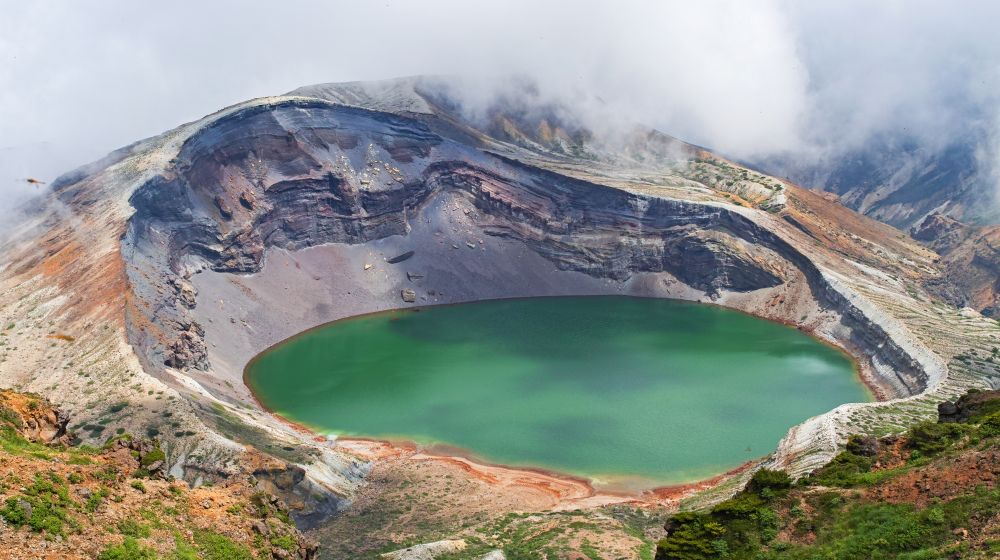
The charm of winter is the Zao Onsen Ski Resort, one of the largest in Tohoku, and the Zao tree ice, which is called the Snow Monster. Even if you can't ski, you can enjoy the tree ice at the tree ice light up and the Zao ropeway.
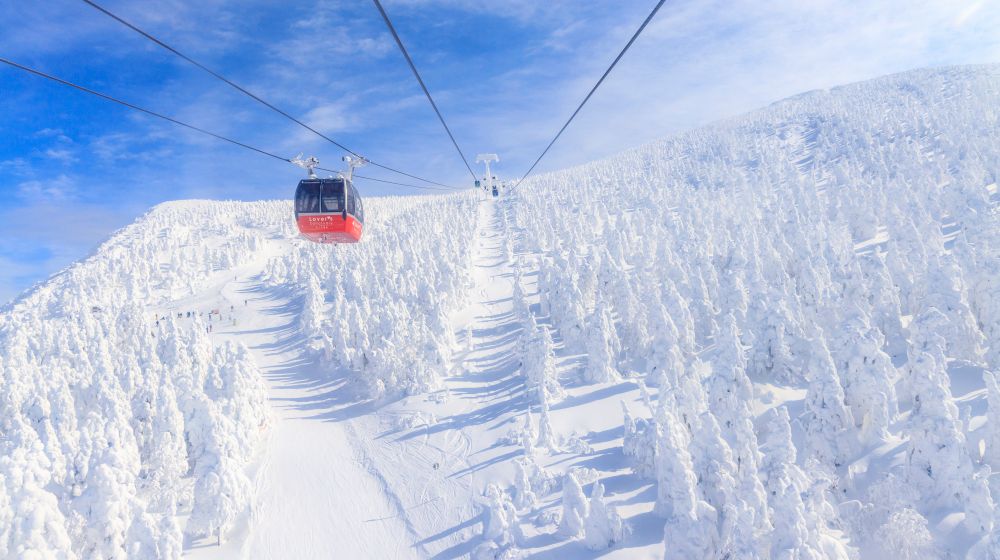
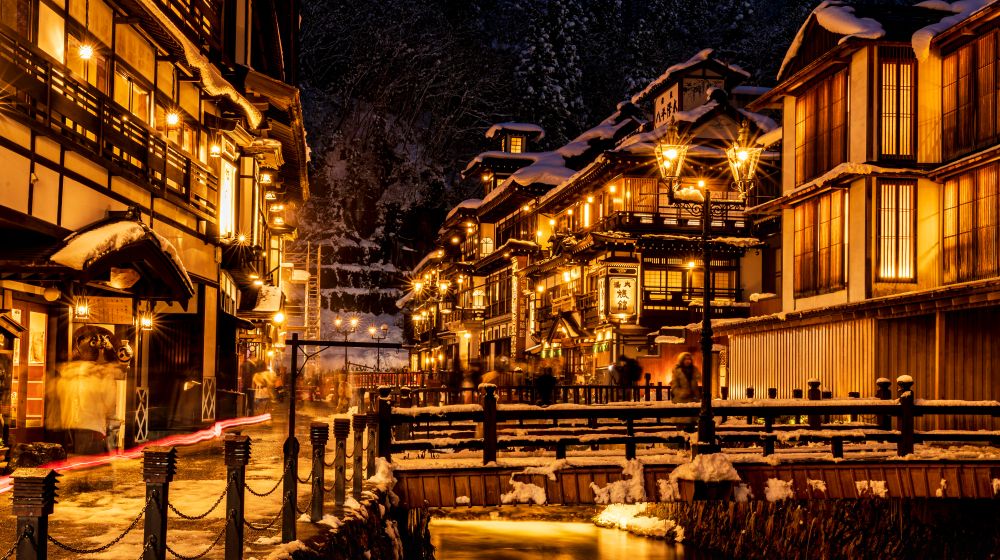
It is a Onsen that is said to have been discovered by coal miners in 1614.
This place once flourished as a silver mine mining site, and after the mine was abandoned, the Onsens used by miners developed as a Onsen resort.
The charm of Ginzan Onsen is the quaint scenery of the Onsen town. Nostalgic wooden inns built from the end of the Taisho period to the early Showa period line the Ginzan River. The atmosphere at sunset when the gas lamps are lit is also exceptional.
The Onsen resort is located in a deep valley, and you can spend time while looking at the snowy scenery of the quaint Onsen town in the summer and cool in the winter.
If you are tired of walking around the Onsen town, you can heal your tired feet with the Waraku foot bath in the Ginzan River.
Nearby attractions are Nobesawa Ginzan Cave and Shirogane Falls.
The Silver Mine Cave (Yanzawa Silver Mine Site) is the site of a silver mine that gave the place name of Silver Mountain Onsen. You can see the mine shaft of the silver mine, which flourished as a silver mine under the direct control of the shogunate during the Edo period.
The White Silver Waterfall is a large and small waterfall with a drop of 22 meters. The waterfall that splashes down shows a beautiful appearance that changes depending on the four seasons, along with the fresh greenery and autumn leaves in the surrounding area.
This Onsen has a history of about 1,300 years, which is said to have opened in 712.
In the Shonai region, it is known as the oldest Onsen that was opened. In Tsuruoka City, it is counted as one of the three famous Onsens in Shonai. It is not far from the city of Tsuruoka and is easy to access. In addition to each inn, there are two communal baths and one foot bath. At Yudagawa Onsen, Yudagawa Onsen Kagura, which has been popular with local people for more than 400 years, is performed every year.
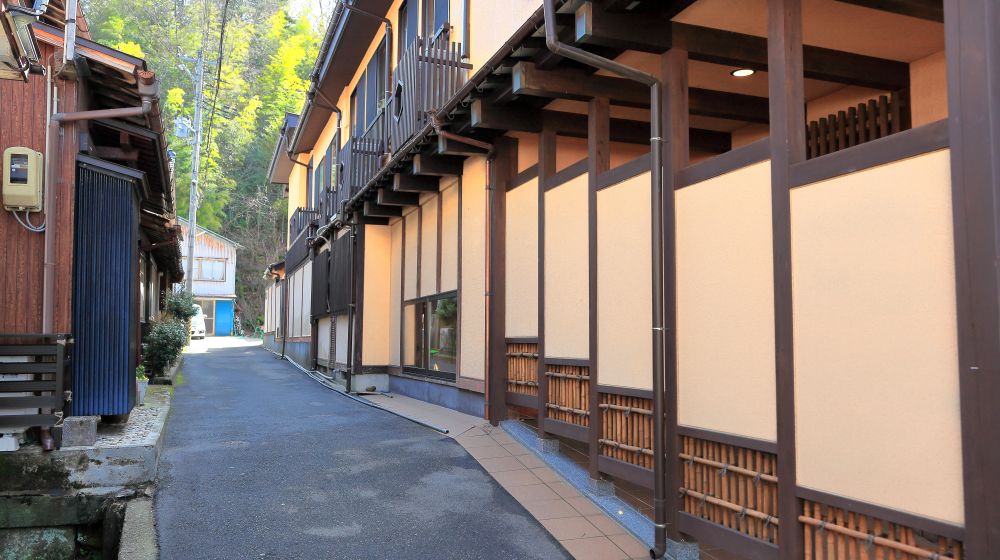
Regional attractions include Umebayashi Park and Tsuruoka City Kamo Aquarium.
In Plum Forest Park, you can see about 300 red and white plum trees blooming in spring. In addition to plums, you can also enjoy flowers such as botan, azalea, satsuki, irises, and daffodils.
Tsuruoka City Kamo Aquarium is the only aquarium in the prefecture. It exhibits more than 60 species of jellyfish, one of the largest in the world.
At the Jellyfish Dream Theater, a large jellyfish tank with a diameter of 5 meters, you can enjoy a fantastic scene with about 10,000 moon jellyfish lit up and drifting.
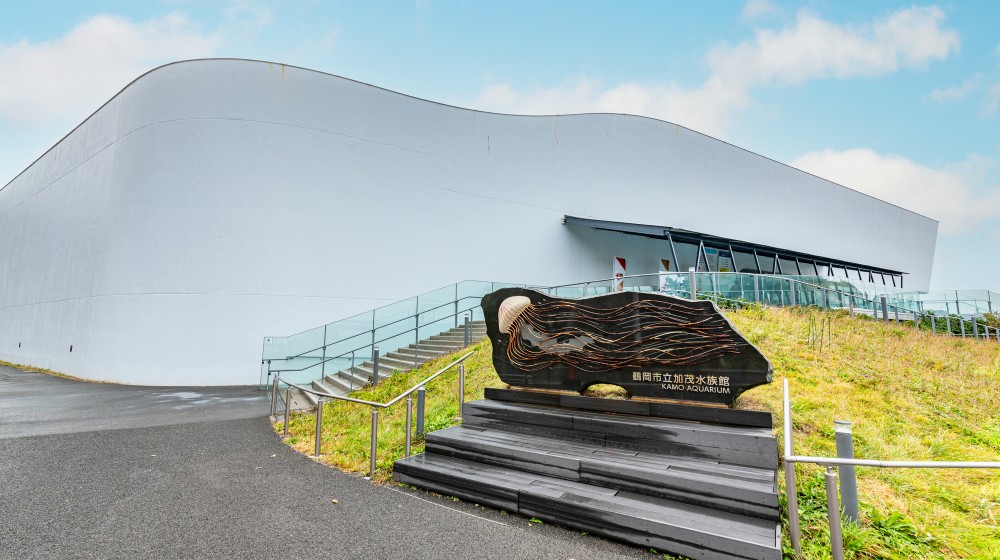
It is said to have opened in 807 and has a history of about 1200 years. It is located at the foot of Moon Mountain in the three mountains of Dewa, along the Copper Mountain River. In ancient times, it flourished as a worship entrance for the mountain worship of the three mountains of Dewa.
The "Onsen Treatment Consultation Center", which inherits the culture of Onsen healing from ancient times, gives advice on how to heal modern Onsens.
The specialty of Tachiori Onsen is the lively morning market, which starts at dawn. At the morning market, seasonal vegetables and wild vegetables are lined up. One of the attractions of the morning market is that you can buy seasonal flavors while interacting with the locals.
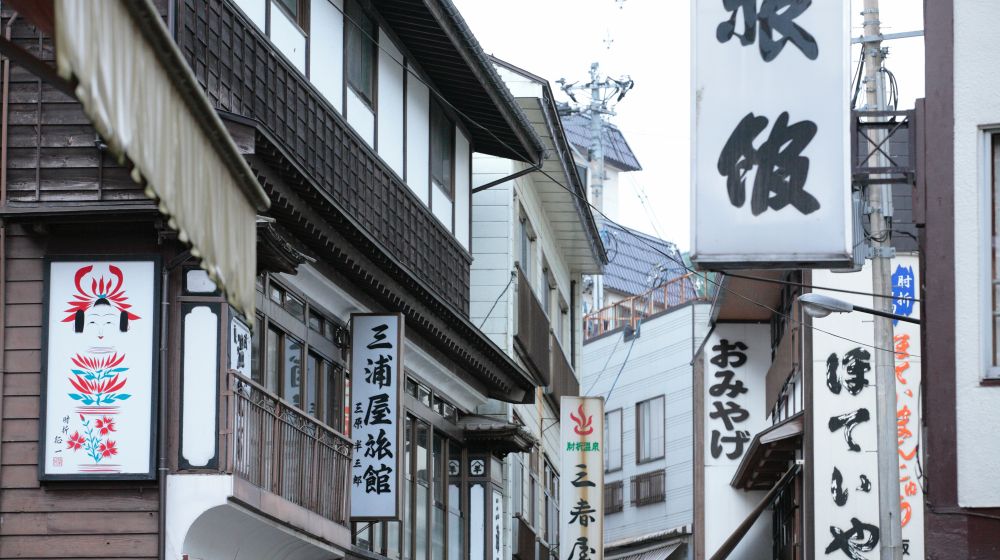
Nearby attractions include Shikamura rice terraces and Gensen Park.
The rice terraces in Shikamura were selected as one of the "100 Best Rice Terraces in Japan". Beautiful rice terraces spread out on a gently sloping land surrounded by mountains. In the summer, the "Shikamura Terraced Rice Firefly Fire Festival" is held.
In the source park in the upper reaches of the Doyama River, there is a source dome and a foot bath where you can see the Onsens gushing spontaneously.
It is said to have opened in 1093 and has a history of about 930 years.
It is said that Yoshitsuna, the younger brother of the Minamoto Yoshi family, who was responsible for the unification of Osu, found a Onsen in a dream. When Yoshitsuna and other soldiers soaked their wounded bodies in hot water, the wounds healed instantly, and the water was stained red with blood, which is the origin of Akayu Onsen.
During the Yonezawa clan period, Akayu Onsen was protected as a Onsen for princes and flourished as a place of amusement officially recognized by the domain. Akayu Onsen has three Onsens.Akayu Onsen is home to one of Japan's leading wineries. There are 6 wineries in the surrounding area. At the winery, you can enjoy wines made from local grapes.
At Nanyang Sky Park, you can have a paragliding experience. From the sky, you can enjoy a wonderful view of the four seasons.
Oohatsan Park is a park located in Akayu Onsen Town. In spring, about 1,000 cherry blossoms of 25 varieties are in full bloom. You can see the change of seasons, such as cherry blossoms in spring, green leaves in summer, and autumn leaves in autumn.
